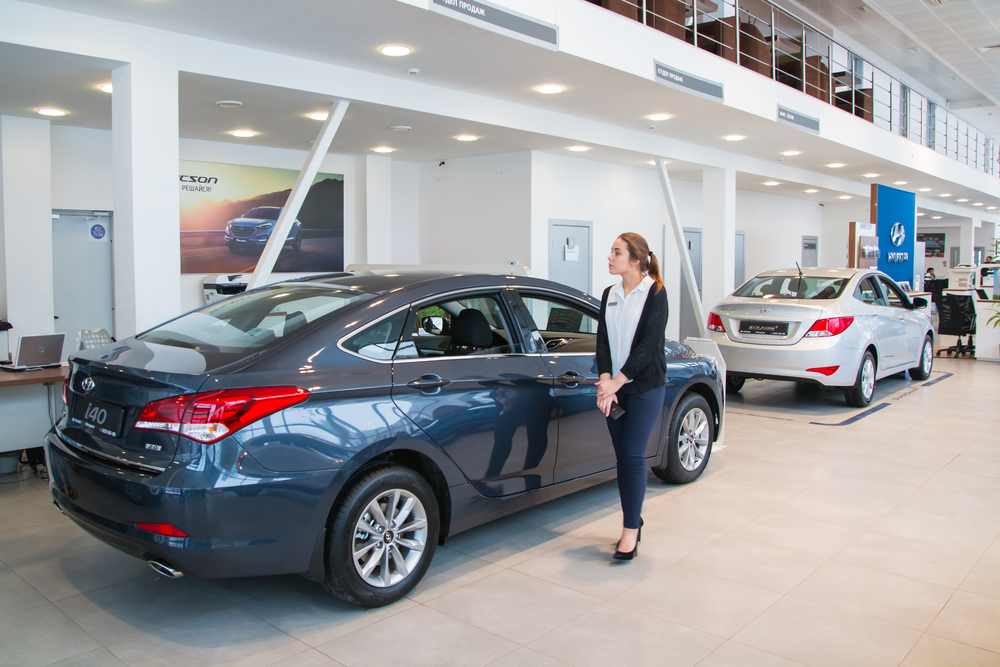- A car is one of the biggest investments you can make, so getting a great deal is important.
- But knowing how to finance a car, whether you’re leasing it or taking out a loan, can be tricky if you’re not sure where to start.
- To get the best rate, start by checking your credit score and making sure it’s good enough to get a lease or loan. Then, do some comparison shopping to find the lowest interest rate you qualify for.
- Compare quotes and apply for an auto loan from LendingTree or CarsDirect »
Unless you live in an area where public transportation is abundant and reliable, having a car available whenever you need it is pretty important. Cars get us to and from our jobs, errands, and social activities, and unless you can walk everywhere to do those things, a reliable car is your best bet.
Having said that, a car is one of the more expensive things you can buy, so figuring out financing is generally the first step towards buying a car.
How to finance a car
1. Check your credit score
As with most things in the financial world, the better your credit score, the better your options will be when it comes to financing a car. Check with a site like Credit Karma to find out your credit score. If you have a score in the very poor to fair range, you might want to consider increasing your credit score before financing a car to gain access to offers with better interest rates.
2. Figure out your budget
Before you fall in love with a car, it’s a good idea to set your budget. After all, there’s no use in looking at sports cars when you can really only afford something of the standard variety.
If you already own a car, consider getting a new car that would keep your current payments roughly the same (assuming that works with your other expenses). If this will be your first car, it's a good idea to go over your monthly budget line by line to see how much you can actually afford to divert from other things towards a monthly car payment.
Remember that if you're financing a car, you'll likely be paying interest and potentially other fees, so keep that in mind as you're setting your budget.
3. Learn the car-buying lingo
When you're financing a car there are a few terms you'll want to get familiar with. The interest - or finance charge - is essentially the cost of borrowing money from whatever lender you go with. This will be an additional monthly charge on your loan.
Your car loan term is another important thing to get familiar with - it's the number of months that you can expect to be paying off your loan. In general, the longer the loan, the more you'll pay in interest over time.
You may be required to put down a down payment to purchase your car - that's the initial lump sum of cash you're putting towards the purchase. After that, your monthly payment will be calculated based on the cost of the car minus your down payment (plus interest, of course).
4. Pick from two options: getting a loan or getting a lease
When it comes to car financing, you have two general options: getting a traditional loan to pay for the car, or getting a lease. Leasing a car is akin to renting, since you'll return the car back to the dealership at the end of the lease term.
If you're thinking about a lease, consider how much you'll actually be driving the car - leases tend to charge a per-mile fee above the miles included in your contract. The dealership can help you better understand the specifics behind leasing if you're interested in going this route, but a lease may also require a down payment, as well as other lease-related fees and possibly a security deposit.
A car lease can also come from a third-party lender - like a bank or online finance company - but they are traditionally done directly through the car dealership. Different dealerships may offer different leasing packages based on the type of car you want, whether you're willing to drive an older version or want something brand new, etc.
Once you know which car you'd like, it's worth calling around to different dealerships to see what their leasing options are to find the best one. As with traditional loans, customers with higher credit scores will usually have access to better leasing rates and packages.
5. Research financing options
If you decide to finance through a traditional loan rather than leasing, be sure to do your research. Like any loan, different companies will offer different incentives, interest rates, and financing terms.
If you have good credit, the dealership might offer you great financing rates directly (but you should still do your research in advance just to be sure - you'll want to know the lowest possible APR you can get). If you have less than stellar credit, researching your options beforehand is even more important.
Online lenders, such as LendingTree and CarsDirect, are a good place to start, but the major national banks, like Bank of America, are another route, as are community banks and credit unions. You can get quotes from these different lenders then compare the basic details.
6. Compare all the numbers, not just monthly payments
While keeping a monthly budget in mind is important when comparing finance options, you should also look at a number of other factors when deciding on a loan offer, including how much interest you'll pay over the life of the loan, the term length of the loan, and any other fees that come with the loan.
Just because one loan is $50 less per month doesn't mean it's the best option overall if you'll in fact be making payments on that loan for a longer amount of time. In general, the more money you can put down and the shorter the term length of the loan you can go with, the more money you'll save in the long run.
7. Apply for financing
Once you've found your ideal loan, you can apply for pre-approval; this can be done online or in person at a bank or credit union. If you'd like to apply for more than one loan to see which lender ultimately makes the best offer, you can do that - but you may risk dinging your credit score.
Every hard inquiry from a lender will lower your credit score slightly, but some credit bureaus will view multiple inquiries for the same type of financing (i.e. an auto loan) in a short amount of time as comparison shopping and count all of those inquiries as one hard inquiry. Just be cautious and thoughtful during this process and only apply for financing when you think you've found the right deal.
You'll need some basic information for these applications (like your name and address), but you'll likely also have to answer a lot of questions about your finances and employment history. If you can apply for the loan online, that might be easier, but if you'd prefer to do it in person at a bank, it's worth calling ahead of time to find out exactly what information you'll need so you can have it on hand.
Ready to apply for an auto loan? Check out these offers from LendingTree and CarsDirect »
8. Bring your pre-approval to the car dealership
Once you've run the numbers, done the research, and have a pre-approval for the best financing in hand, take that to the dealership and be ready to pick up the car of your dreams (or at least the one that'll get you where you need to go).
With your pre-approval all ready to go, the car dealership may try to offer you another option, but they'll need to beat your current offer if that's the case. If the dealership can't get you a better financing deal, then at least you'll still be ready to purchase your car since you've done the legwork and know exactly how you'll be paying.
9. Set up automatic payments
To stay in good graces with your lender and avoid tanking your credit score, it's a good idea to set up automatic payments with your lending company so that you never miss a payment.










